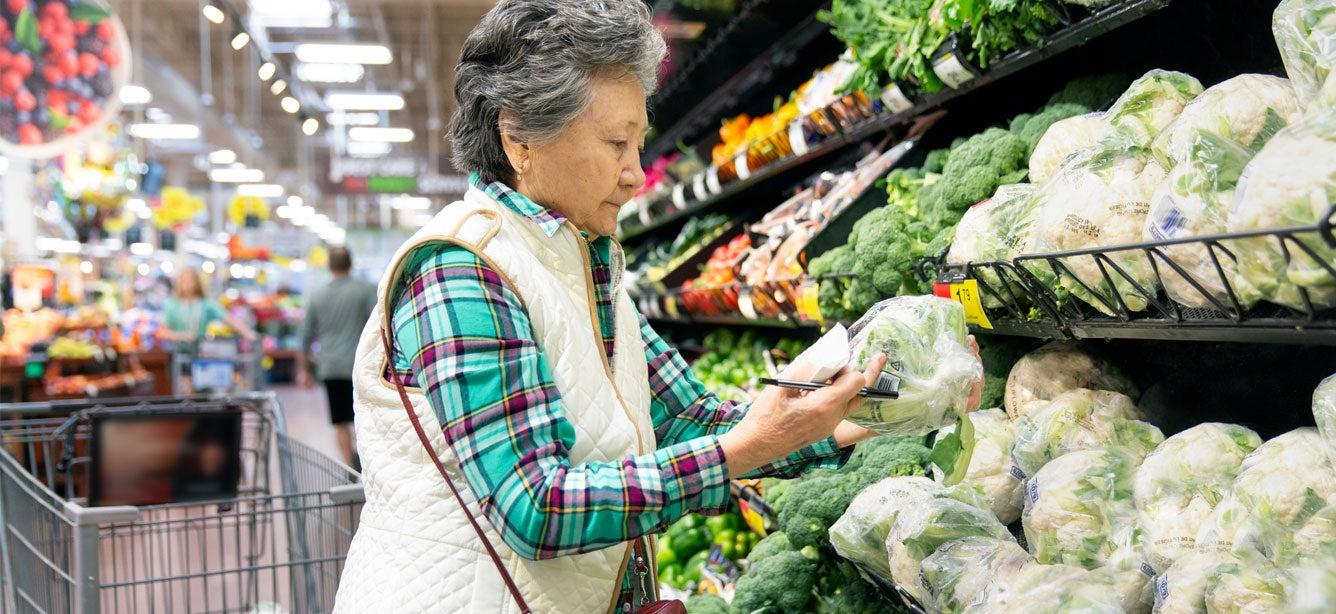
Related Topics
The Supplemental Nutrition Assistance Program (SNAP, formerly known as food stamps) was created to help people with low income afford healthy groceries. But among older populations that need SNAP assistance, participation in the program is still alarmingly low. Roughly 3 out of 5 older adults who qualify for SNAP are passing up life-changing benefits, which translates into approximately 5 million people.1
One obstacle preventing older adults from applying to SNAP is an assumption about the application process itself. Many people worry that it’s too complex or time-consuming. But applying for SNAP assistance isn’t as difficult as you might think.
How do I apply for food assistance through SNAP?
Although it’s sponsored by the federal government, SNAP is administered by individual states. You must apply for SNAP by working directly with the agency in your state that’s responsible for issuing benefits.
SNAP food assistance is available to anyone who meets its eligibility criteria, including older adults. Each state has different requirements governing access to benefits. Generally speaking, the process of applying for SNAP follows the steps below.
Step 1: Check your eligibility for SNAP
Since SNAP is a need-based program, a household must typically meet certain financial guidelines to qualify for benefits. The 2023 income and resource limits for SNAP are as follows:
- Income limits: For an older adult (aged 60+) living alone, the income limit is $1,473 in gross income and $1,133 in net income. For a two-person household, the SNAP income limit is $1,888 in gross income and $1,452 in net income.
In addition to taxes, a variety of deductions can help you meet SNAP income limits. For example, adults aged 60 and older and people with a disability can deduct monthly out-of-pocket medical expenses over $35 from their gross income. This is referred to as the SNAP excess medical expense deduction. There is no cap, so for older adults with high medical costs, it’s a valuable deduction. - Resource limits: Households with at least one member who is 60 or older can have $4,250 or less in countable resources (assets). Countable resources include cash, money in a bank account, and certain vehicles. A home and lot and most retirement and pension plans are not counted when determining SNAP eligibility.
NCOA offers a free, easy-to-use online tool where you can browse benefits, including learning more about SNAP. Just go to BenefitsCheckUp and enter your ZIP code to get started.
Even if you don’t think you’ll qualify for SNAP, it’s worth using BenefitsCheckUp to find out. Mrs. Kim, aged 66, is glad she did. After her husband was laid off, she and her family struggled. BenefitsCheckUp determined they were eligible for SNAP assistance. Now they're getting relief in the form of $350 in monthly food benefits.
It hadn't even occurred to us that such benefits might be possible," Mrs. Kim told her benefits counselor.
Step 2: Complete and submit your SNAP application
Depending on your state of residence, you can apply for SNAP online, by mail, or in person. Applications are usually available at your local Social Security office. When you apply, you’ll be asked for some basic information, such as:
- Your name, home address, and Social Security number (if you have one)
- Your date of birth
- The size of your household
- Your annual income
- Any resources you have (e.g., cash, property)
- Your expenses
If there’s another adult living in your household, you will be asked for their information, too. Rest assured that any personal data you share is kept strictly confidential. Even if you apply for SNAP online, your information is protected by special security technology.
Step 3: Gather supporting documents and have your SNAP interview
First-time SNAP applicants are required to participate in an eligibility interview. Shortly after you’ve handed in, mailed, or submitted your application, you’ll be contacted by a SNAP representative. Although the idea of an interview can feel intimidating, don’t worry! The purpose of the interview is to verify the information you’ve already provided. Since most SNAP interviews are done over the phone, you can do it right from your home.
There’s no standard script for a SNAP interview. However, you can expect questions along the lines of:
- What is your full name and birth date?
- Are you a U.S. citizen? (You may still be eligible if you’re a non-citizen.)
- What is your Social Security number?
- Where do you live? (You can still qualify if you’re houseless.)
- What’s your monthly income?
- Do you pay utilities? What other your other regular expenses?
To verify this information, you’ll want to have documentation on hand that applies to everyone in your household. This documentation may include:
- Proof of identity such as a driver's license, work visa, or state ID card
- Proof of income for each member of your household, such as pay stubs, pension statements, or a benefit verification letter from Social Security
- Mortgage statements or rent receipts
- Proof of dependent-care costs (for a disabled household member, for example)
- Utility bills
Are you unable to travel to an in-person appointment—or do you have trouble communicating over the phone? Many states allow you to appoint an authorized representative to complete the interview on your behalf.
Step 4: Await the decision on your application
You should receive a decision on benefits within 30 days of submitting your SNAP application. In some cases, your local SNAP office may reach out to ask you additional questions before they make a final decision. If you qualify for food assistance, you’ll receive an approval letter that outlines:
- Your monthly benefit amount
- When your benefits will begin
- How long your monthly SNAP benefits will last
Your benefits will be deposited onto an electronic bank transfer (EBT) card, which can be used just like a debit card to purchase SNAP-eligible groceries.
Should the state determine you’re not eligible for SNAP, you’ll receive a notice stating this along with an explanation on why your application was not approved. If you don't receive a decision within 30 days after you apply for benefits, call or visit your SNAP office.
What if I disagree with the SNAP benefits decision?
If you’re unhappy with the decision regarding your SNAP benefits, you’re entitled to an appeals hearing. You can initiate the appeals process by calling your SNAP caseworker directly and letting them know. You can also use your SNAP verification letter. Find the section titled “I want to appeal” and write “I disagree with this decision.” Sign and date the document and either mail it to your local SNAP office or drop it off in person. Within a few weeks, you should receive a letter from your state with details about your hearing.
What if I have an urgent need for food assistance and can’t wait 30 days?
If your household has less than $100 in cash and less than $150 in gross monthly income—or if your housing and utility expenses are more than what you have in liquid assets and gross monthly income combined—you may be able to start receiving expedited SNAP benefits within 7 days of submitting your application (with or without an interview).
In the meantime, if you or an older adult you care for is facing immediate hunger, contact your local food bank. They can direct you to food pantries and programs that can help you access healthy food at no cost.
Source
1. Food Research and Action Center. SNAP Participation Lags Among Eligible Seniors in Every State, Putting Them at Greater Risk of Hunger, Food Research & Action Center. 2019. Found on the internet at https://frac.org/news/snap-participation-lags-among-eligible-seniors-in-every-state-putting-them-at-greater-risk-of-hunger.



